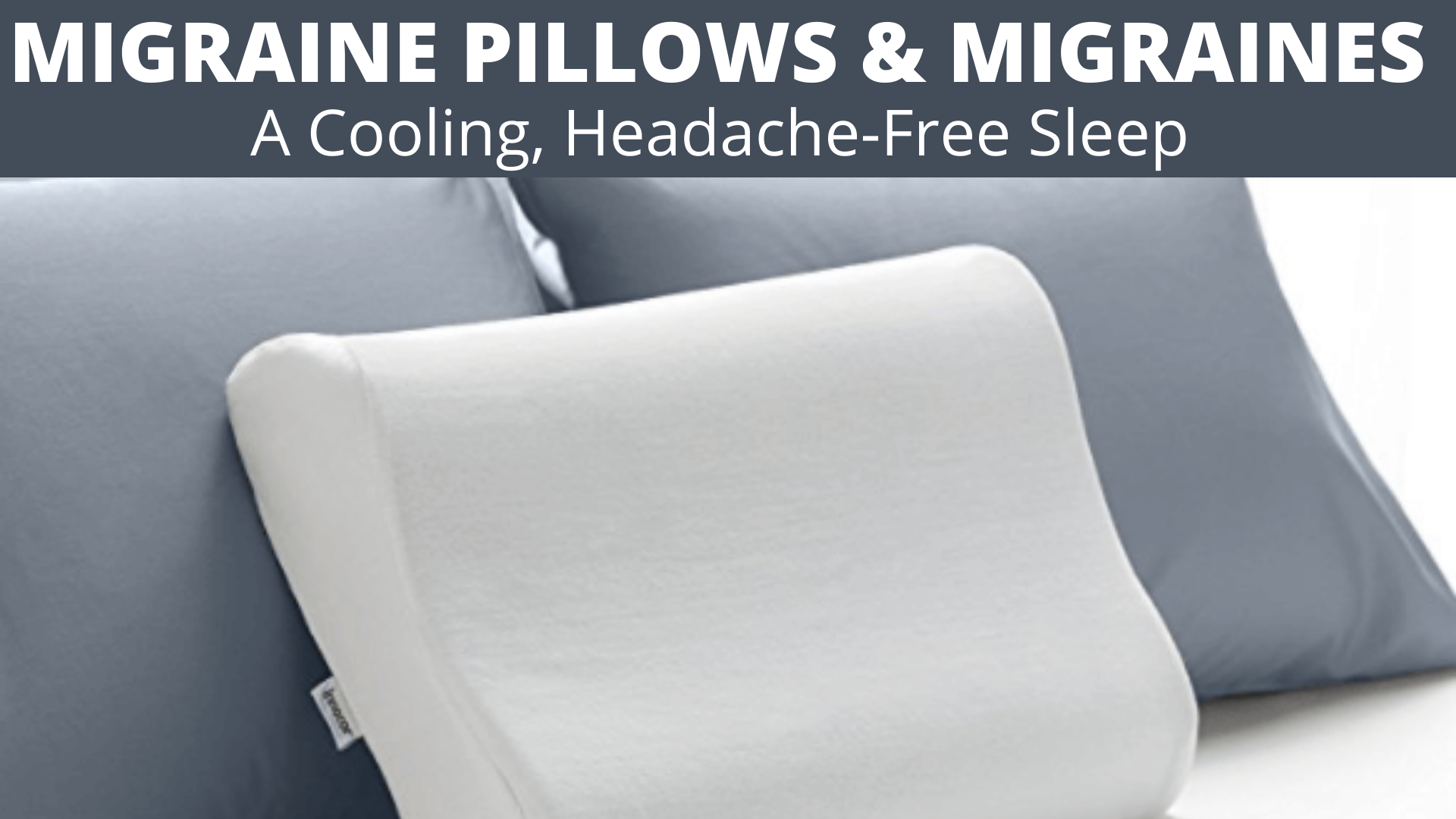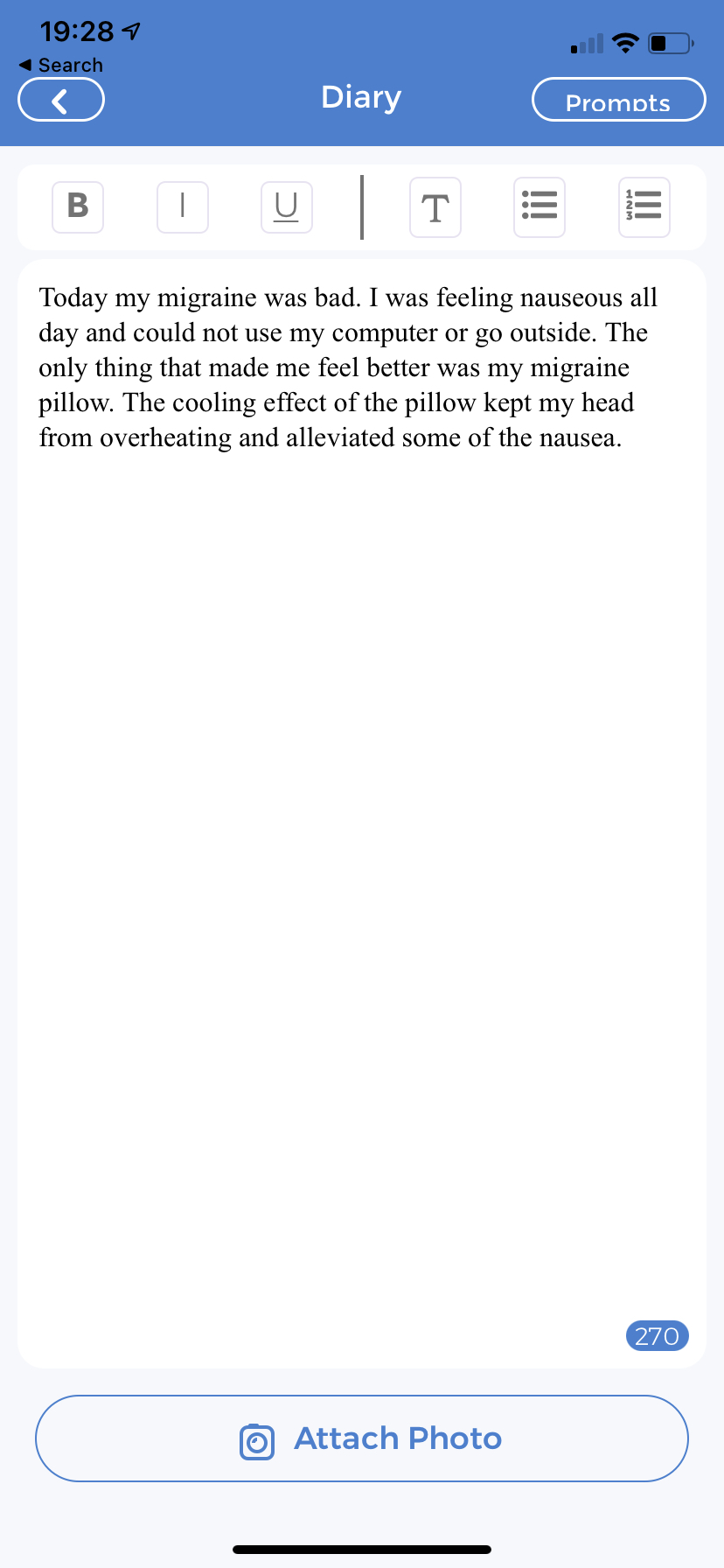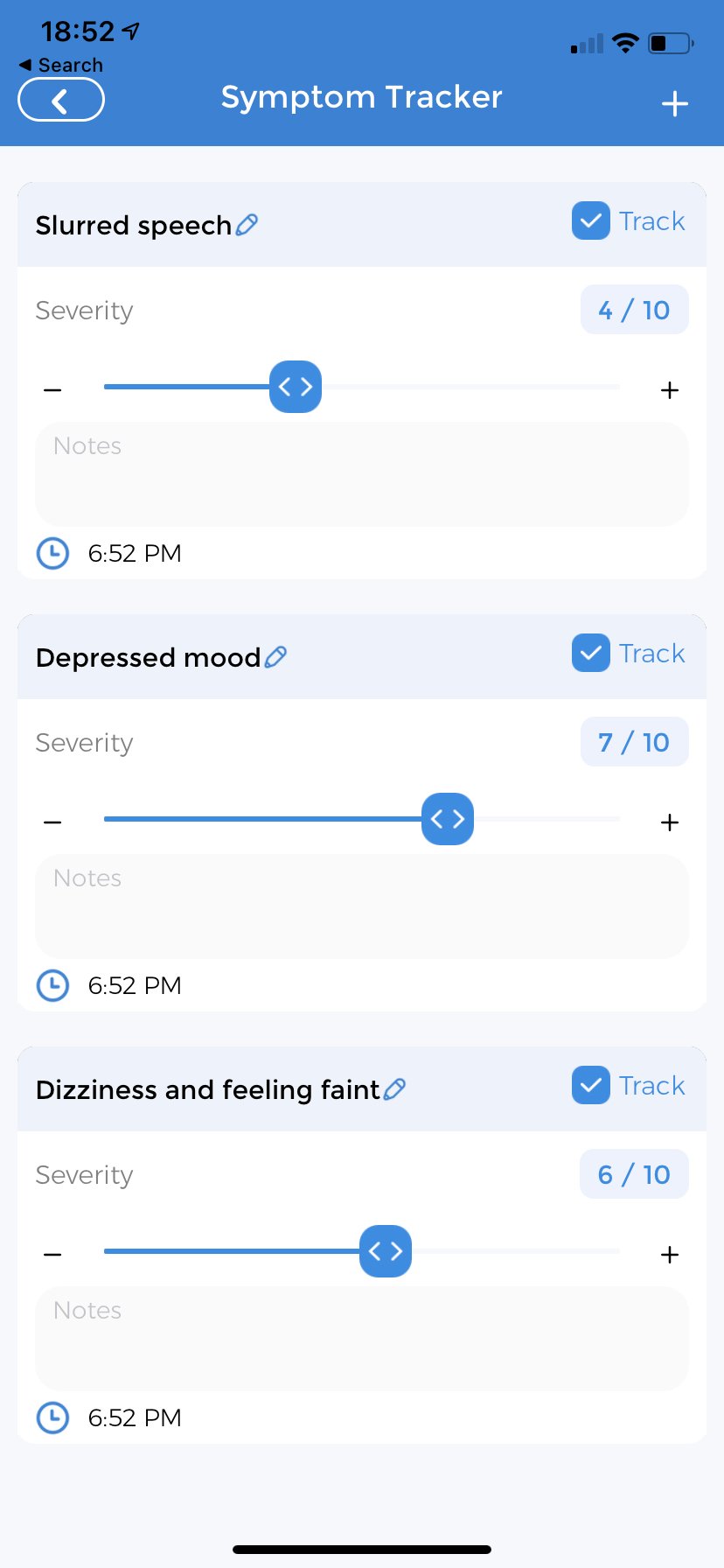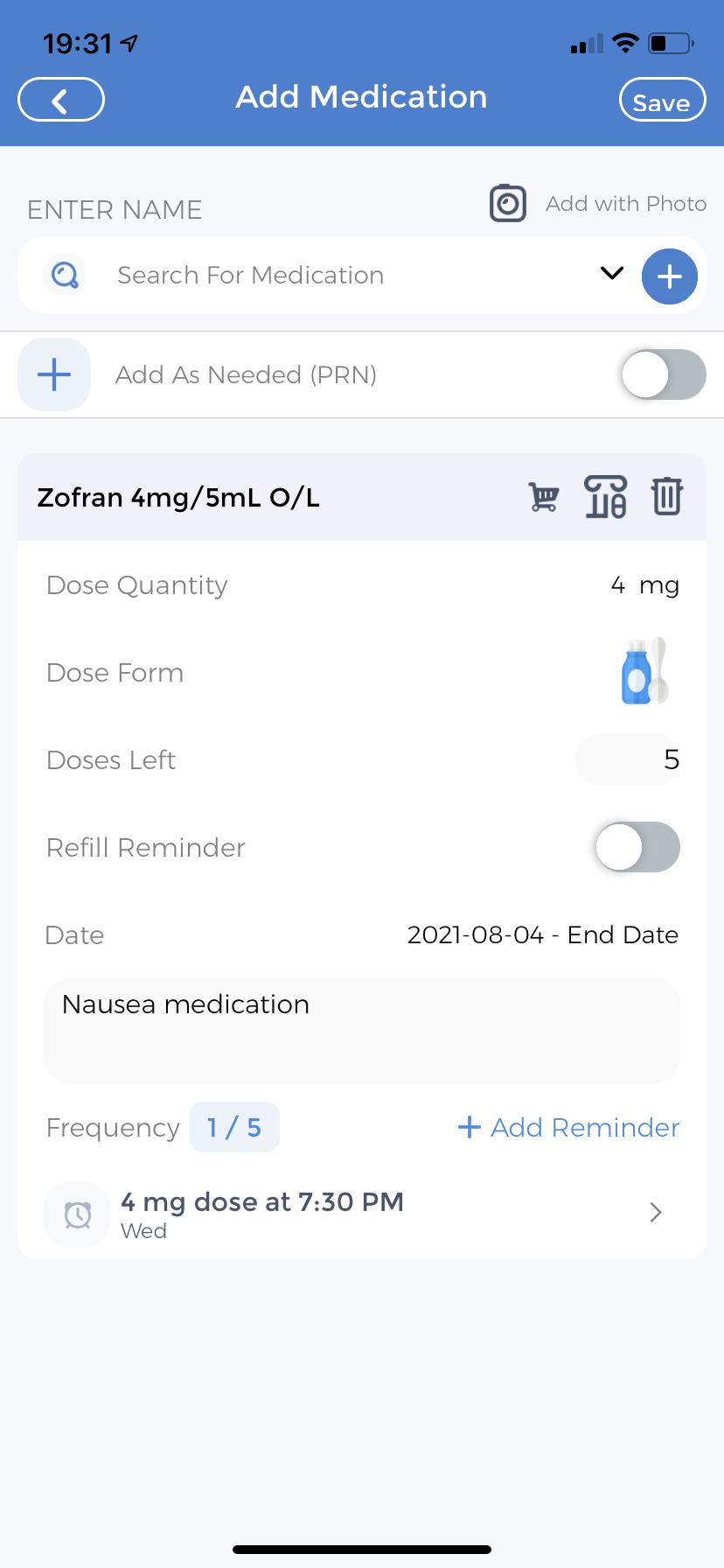
Do you suffer from migraines? Does your family have a history of migraines? Have you tried different treatment methods; migraine pillows, medications etc.? If not the article will provide an overview of what migraines are, and highlight different types of migraines. It will focus on the causes and symptoms of migraines, what migraine pillows are, how migraine pillows can help, and how tracking migraine symptoms in the CareClinic app can be beneficial for patients.
[1][2]Table of Contents
- What is a Migraine?
- What are the Causes of Migraines?
- What are the Symptoms of Migraines?
- What are the Different Types of Migraines?
- What are the Risks of Migraines?
- What are Migraine Pillows?
- How Do Migraine Pillows Help?
- The Types of Migraine Pillows
- Types of Migraine Treatments Apart from Migraine Pillows
- Using the CareClinic App
- Downloading the CareClinic App
- Moving Forward
What is a Migraine?
A migraine is a recurring type of headache. It causes moderate to severe pain and presents as a throbbing or pulsing sensation in the head. You often feel pain on one side of the head and can be accompanied by nausea, vomiting, and sensitivity to sound and light.
[3][4][5]What are the Causes of Migraines?
Migraines are genetic. If someone in your immediate family suffers from migraines, it is likely you can develop migraines too. Apart from genetics, migraines are triggered by a number of other causes:
- Stress
- Anxiety
- Hormonal changes in women
- Bright/ Flashing lights
- Loud noises
- Strong smells
- Side-effects of medication
- Sudden changes in weather or environment
- Skipped meals
- Caffeine or caffeine withdrawal
Non-environmental factors include certain foods and drinks:
- Alcohol
- Chocolate
- Aged cheeses
- Monosodium glutamate (MSG)
- Fermented or pickled foods
- Yeast
- Cured or processed meats
What are the Symptoms of Migraines?
Migraines are different for everyone. They occur in stages and each stage has a different set of symptoms:
Prodrome
This stage occurs up to 24 hours before an actual migraine. These are the early signs and symptoms to take note of. You can experience:
- Sensitivity to sound, light and smell
- Fatigue
- Food cravings or lack of appetite
- Mood changes
- Severe thirst
- Bloating
- Constipation or diarrhea
Aura
Not everyone experiences this phase. The symptoms in this stage stem from your nervous system and affect your vision. They start gradually over a 5 to 20 minute period and usually last less than an hour. Some common symptoms are:
- Black dots, wavy lines, zig-zag lines or flashes of light
- Tunnel vision
- Complete blindness
- Tingling or numbness on one side of the body
- Mumbled speech
- Heavy feeling in arms and legs
- Ringing in ears
- Changes in smell, touch or taste
Attack
A migraine headache usually begins as a dull ache and eventually grows into throbbing pain. It worsens with physical activity and the pain can move from one side of your head to another. The pain radiates anywhere from the sides of your head, to the front of your head, to the whole head. About 80% of all people experiencing migraines suffer from nausea and about 50% of patients vomit during an episode. Most migraines will last up to 4 hours but in severe cases, they can last up to 3 days. It is common to experience between two and four headaches a month but some people may only experience them once or twice a year, while others experience them every few days.
Postdrome
This occurs following the headache. This stage can last up to a day after your headache has subsided. Symptoms include:
- Feeling tired and cranky
- Feeling unusually fresh and happy
- Muscle pain or weakness
- Food cravings or lack of appetite
What are the Different Types of Migraines?
There are two main types of migraines, migraines with aura or classic migraines, and migraines without aura or common migraines. Apart from these categorizations, there are other types of migraines that will be explained here:
- Menstrual migraine – The headache is linked to a woman’s menstrual (period) cycle.
- Silent migraine (acephalgic) – Aura symptoms but no headache.
- Vestibular migraine – You experience balance problems (vertigo), nausea and vomiting. These symptoms occur with and without headaches and are most common in people who suffer from motion sickness.
- Hemiplegic migraine – Patients experience short episodes of paralysis (hemiplegia). It can also lead to numbness, dizziness, loss of vision and weakness in one side of the body.
- Ophthalmic migraine – This is a retinal migraine. It causes short-lived partial or total vision loss in one eye and a dull ache behind that eye. It then spreads to the rest of your head.
- Ophthalmoplegic migraine – This causes pain around your eye, including paralysis of the muscles around it. It is caused by pressure on the nerves behind the eye or by an aneurysm (blood bulges in the wall of the artery). You can also experience droopy vision, double vision or vision changes.
Severe Types of Migraines
These types of migraines are more severe than other types of migraines. They are also harder to diagnose.
- Abdominal migraine – Experts do not know much about this migraine. It causes stomach pain, nausea and vomiting. It is more common in children and may change to classic migraines with an aura over time. Between episodes, there are no symptoms and there are no diagnostic tests to confirm this type of migraine.
- Status migrainous – This is a severe type of migraine that can last longer than 72 hours. The pain and nausea are so intense you could need hospitalization. Sometimes certain medications or medication withdrawals can cause this type of migraine. The symptoms of status migrainosus are nausea, vomiting, changes in vision, difficulty concentrating, sensitivity to light and sensitivity to sound.
What are the Risks of Migraines?
More than 38 million Americans suffer from migraines. Some of the factors are unavoidable and some are preventable.
Unavoidable Factors
- Sex – Women are three times more likely to suffer from migraines.
- Age – Most people have migraines between the ages of 10 and 40. Women have reported feeling relief from migraines after menopause which usually happens around 50 years old.
- Family History – Four out of five migraine sufferers have other family members who also suffer from migraines. If one parent has a history of migraines their children have a 50% chance of getting it. If both parents suffer from migraines that number jumps to 75%.
- Other medical conditions – Depression, anxiety, bipolar disorder, and epilepsy all increase the likelihood of migraines.
- Hormone changes – Many women have headaches around their period, while pregnant or while ovulating. Migraines can also be caused by birth control or menopause where hormones are off-balance in the body.
Preventable Factors
- Stress – Your brain releases chemicals that cause blood vessels changes that can lead to a migraine.
- Foods – Cheese, alcohol and certain additives used to keep food fresher for longer can cause migraines
- Physical Inactivity – Being obese or overweight is a risk factor. Exercise and sex can help prevent migraines from forming
- Smoking – Tobacco increases the risk factor.
- Sleep – Too much sleep, not enough sleep or the inability to sleep (insomnia) can cause migraines.
Working on preventable factors reduces the likelihood of migraines. Doctors recommend things like migraine pillows to help reduce stress and sleep. They try non-medical treatments first and depending on severity add medication to the treatment plan. The next section highlights different types of treatments starting with explaining what migraine pillows are.
[12][13][14][15]What are Migraine Pillows?
There are unfortunately no cures for migraine headaches. Doctors however prescribe non-medical treatments as the first options for combatting migraines. The most effective treatment they have found outside of medicine is migraine pillows. Migraine pillows are specific pillows designed to prevent smell, sleep and back or neck pain triggers. When the nerves in the upper neck are irritated it can result in pain in the head, face, temples etc. This is usually caused when pillows are too stiff, too soft or are placed at unsuitable heights to sleep on.
[16][17]How Do Migraine Pillows Help?
Migraine pillows act as aids for sleep. They help provide better sleeping posture where the body is in alignment from knees to neck. This in turn allows muscles to stay loose while sleeping. The great thing about migraine pillows is that they are customizable to individuals. A migraine pillow that works for you may not work for someone in your family therefore it is important to research which migraine pillow/ migraine pillows work best for you.
[18][19][20]The Types of Migraine Pillows
- Contoured Neck Pillows – These pillows are made from memory foam and will remember the shape of your neck as you sleep.
- Buckwheat Pillows – The smell, temperature, breathability and support make these great migraine pillows. They do not emit chemical smells and stay cooler than most other pillows preventing overheating.
- Cooling Pillows – As people who suffer from migraines tend to run at a hotter temperature than average, cooling pillows can help reduce body temperature. This allows for instant pain relief.
Types of Migraine Treatments Apart from Migraine Pillows
Since treatment primarily focuses on relieving symptoms, there are different types of pain relievers and medications that can be used. There are also lifestyle changes that can be made to prevent migraines.
Medical Treatments for Migraines
- Over-the-counter (OTC) drugs – Acetaminophen, aspirin and ibuprofen are the main ingredients. These combined with caffeine help relieve symptoms. Do not take drugs without consulting your doctor first.
- Nausea medication – your doctor can prescribe nausea medication to reduce the side-effect of a migraine.
- Triptans – These drugs balance chemicals in the brain. The warning is that they may be highly addictive and cannot be taken without a prescription. Please talk to your doctor about the side effects of triptans and determine if they are the correct course of action.
- Preventative medication – This is only suggested if you have four or more migraines in a month. You take these regularly or daily to make your headaches less severe. They include seizure medication, blood pressure medication, antidepressants and botox.
- Single-pulse transcranial magnetic stimulation (sTMS) – Place this device on the back of your neck if you have migraines with aura. The device will send a pulse of magnetic energy to your brain which may reduce pain.
Lifestyle Changes to Help Migraines
One of the biggest lifestyle changes people can make is to lessen the amount of screen time. You can do this by closing your eyes and sitting in a dark room. There are also other lifestyle changes you can make:
- Stress Management – Exercise, relaxation techniques and biofeedback may reduce the number and severity of migraines. Biofeedback uses electronic devices to control body functions. A great biofeedback system this article talks about is the CareClinic app.
- Logging Migraine Symptoms – Keeping a diary or using a symptom tracker can help reveal patterns for migraine triggers. The CareClinic app has both features available in one place and will be elaborated on further in the article.
- Hormone Therapy – Can help some women whose migraines are linked to their menstrual cycles. This is specifically for those women who suffer from menopause and whose hormones are fluctuating as a result. The therapy will normalize hormone levels and can prevent migraines from forming.
So how can an app help track all these symptoms and treatments? Which app is the best one to use? Read the next section to find out what the CareClinic app is and how it can help track and prevent migraines effectively.
Using the CareClinic App
The CareClinic app is an all-in-one care app. Anyone can use and access the interface 24 hours a day. The app has a diary feature that allows migraine tracking, along with a symptom, medication and nutrition tracker. You also have access to hundreds of blog articles within the website. The most unique part of the app is the ability to create your own personalised care plan. Your doctor and family members can have access to the plan. This makes treatment easy. This combination of functions makes it the ideal app to use.
Diary Tracker for Migraine Symptoms & Migraine Pillows

Another great feature is the journal prompts. With migraines, sometimes it is necessary to write about mood changes and feelings of depression that trigger migraines. If you do not know where to start the prompts can help. The premium account has access to 16 journal prompts. You can also add lists, bold, italicize, and underline important statements. You can change the colour of the text to highlight your mood. Finally, you can add photos to personalize your diary. They can range from family, friends or situations, to motivational pictures of the internet, and everything in between.
Symptom Tracker for Migraines & Migraine Pillows

The CareClinic app has a symptom tracker that can track not only symptoms of migraines but also track changes in symptoms after using migraine pillows. The symptom check allows you to add any symptoms you feel before, during and after a migraine episode. Search for any symptoms and add them to your care plan. The app will allow you to set a reminder to check in with your symptoms. This allows your doctor to keep track of your migraines and makes it easy to add or reduce medications as needed.
The other great part of the symptom tracker is you can change symptoms after using migraine pillows. To get a baseline understanding of how effective migraine pillows are, you can track any positive or negative changes in your headaches after using the migraine pillows for a period of time. This is also a great way to rate which migraine pillows work best for you and which you should not buy in the future.
Medication Tracker for Migraines

Another use for the medication tracker is in conjunction with the symptoms check. You and your caregivers can see how the medication needs are changing based on what you input about the non-medical remedies such as the use of migraine pillows. If the coolness and unscented nature of migraine pillows is effective, it presents a unique opportunity to wean you off medications. If not, then doctors can up the dose or change the non-medical remedies according to conjunction tracking.
Unique Care Plans for Migraines
Your care plan is a culmination of all the trackers mentioned above. Within your plan, you have an option to add caregivers ranging from doctors and nurses to family members. Everyone you add will have access to your plan. Each person can add information to your plan, allowing for cohesive care. This makes keeping track of your medication needs extremely easy. The most important thing about the care plan is that it provides a clear picture of your medical history and medical needs in one place.
You can add features such as nutrition tracking and sleep tracking. These trackers will allow doctors to create reports and form patterns for causes of migraines. It also allows you to keep track of how effective migraine pillows are in preventing or relieving headaches. You can track if exercise and sleep have a correlation and how your sleep patterns are affected by the different pillows: normal or migraine pillows. This will allow you to make informed decisions about what kind of lifestyle is best for your migraines and therefore what type of treatment course is best for you.
Blog Articles for to Migraines and Migraine Pillows
Our health library holds hundreds of papers ranging from mental health to specific illnesses. Each blog article is carefully curated, researched, and reviewed by a team of experts to give you up-to-date scientifically certified information.
Downloading the CareClinic App
The CareClinic app is available on App Store for iOS users, Google Play for Android users.
[24][25][26]Moving Forward
Having a migraine is a lifelong illness. Some people are lucky and never have to experience one. Others are lucky and see their migraine disappear as they age. For those of you who suffer from it with regularity, try some of the remedies such as migraine pillows, and lifestyle changes such as exercise and reducing stress. Every little action helps make your next migraine that much better. For now, use the CareClinic app and track every symptom, relief point and emotional thought that is associated with migraines. Processing your illness will help you cope better. Get tracking today.
[27][28][29]References
- “Clevive™ Chronic Migraine Pillow – Clevive”. https://clevive.com/kit/migraine-pillow/
- “Best pillows for migraine – do they really work? – ONSEN”. https://onsen.eu/en/blog-about-sleep/best-pillows-for-migraine
- “Migraine | National Institute of Neurological Disorders and Stroke”. https://www.ninds.nih.gov/health-information/disorders/migraine
- “”. https://www.nhs.uk/conditions/migraine/
- “What is migraine? – The Migraine Trust”. https://migrainetrust.org/understand-migraine/what-is-migraine/
- “New clues about how migraines are inherited”. https://www.axios.com/2018/05/03/genetic-research-into-migraines
- “10 common migraine triggers and how to cope with them | NIH MedlinePlus Magazine”. https://magazine.medlineplus.gov/article/10-common-migraine-triggers-and-how-to-cope-with-them
- “Managing Migraines: Finding Your Headache Triggers | URMC Newsroom”. https://www.urmc.rochester.edu/news/publications/health-matters/finding-your-headache-trigger
- “What Causes Migraines? – Migraine Symptoms | familydoctor.org”. https://familydoctor.org/condition/migraine/
- “Stages of a migraine attack – The Migraine Trust”. https://migrainetrust.org/understand-migraine/stages-of-a-migraine-attack/
- “Status Migrainosus: What It Is, Causes, Symptoms & Treatment”. https://my.clevelandclinic.org/health/diseases/status-migrainosus
- “Migraine”. https://womenshealth.gov/a-z-topics/migraine
- “Migraine”. https://en.wikipedia.org/wiki/Migraine
- “Lifestyle Modifications for Migraine Management – PMC”. https://pmc.ncbi.nlm.nih.gov/articles/PMC8971279/
- “SEEDS for success: Lifestyle management in migraine | Cleveland Clinic Journal of Medicine”. https://www.ccjm.org/content/86/11/741
- “Prevalence of neck pain in migraine: A systematic review and meta-analysis – PubMed”. https://pubmed.ncbi.nlm.nih.gov/35166137/
- “What's the source of your headaches? It could be your neck.”. https://www.nationalgeographic.com/premium/article/neck-pain-headaches-chronic-migraines
- “Orthopedic Pillow – Reh4Mat – Neck Pain Migraine Sleep Apnea”. https://www.probrace.com/p/reh4mat-orthopedic-pillow-for-neck-pain-migraines-and-sleep-apnea/
- “Best Pillows for Migraine Relief in 2025: Ergonomic, Cooling & Adjustable Options for Headache-Free Sleep”. https://sleepauthorities.com/best-pillow-for-migraines/
- “Best Pillows For Migraines 2024 – Forbes Vetted”. https://www.forbes.com/sites/forbes-personal-shopper/article/best-pillows-for-migraines/
- “Cervical Support 100% Memory Foam Bed Pillow”. https://www.contourliving.com/contour-cervical-pillow/
- “”. https://thebeddingplanet.com/do-buckwheat-pillows-smell/
- “The 30 Best Contour Pillows of 2024 [Verified] – Cherry Picks”. https://cherrypicks.reviews/pillows/contour
- “CareClinic: Free Health & Wellness App | Sugggest”. https://sugggest.com/software/careclinic
- “Tracker, Reminder – CareClinic on the App Store”. https://apps.apple.com/us/app/tracker-reminder-careclinic/id1455648231
- “Contact Tracker, Reminder – CareClinic Customer Service/Support – JustUseApp”. https://justuseapp.com/en/app/1455648231/tracker-reminder-careclinic/contact
- “Age-dependent prevalence and clinical features of migraine – PubMed”. https://pubmed.ncbi.nlm.nih.gov/16864816/
- “Bridging Gaps in Migraine Management: A Comprehensive Review of Conventional Treatments, Natural Supplements, Complementary Therapies, and Lifestyle Modifications – PMC”. https://pmc.ncbi.nlm.nih.gov/articles/PMC11858087/
- “Migraine management: Non-pharmacological points for patients and health care professionals – PMC”. https://pmc.ncbi.nlm.nih.gov/articles/PMC9691984/


